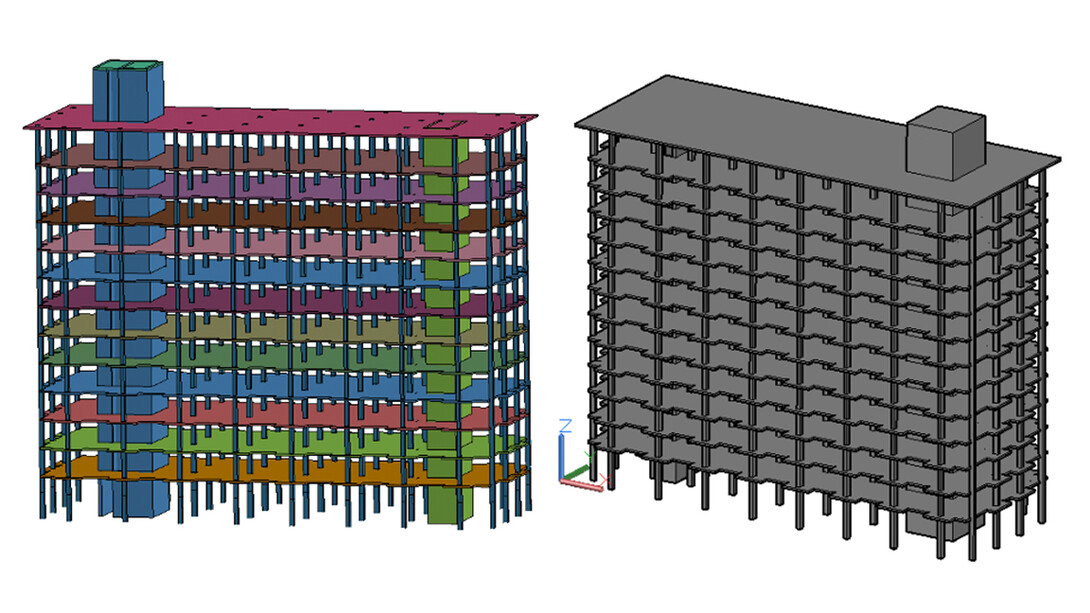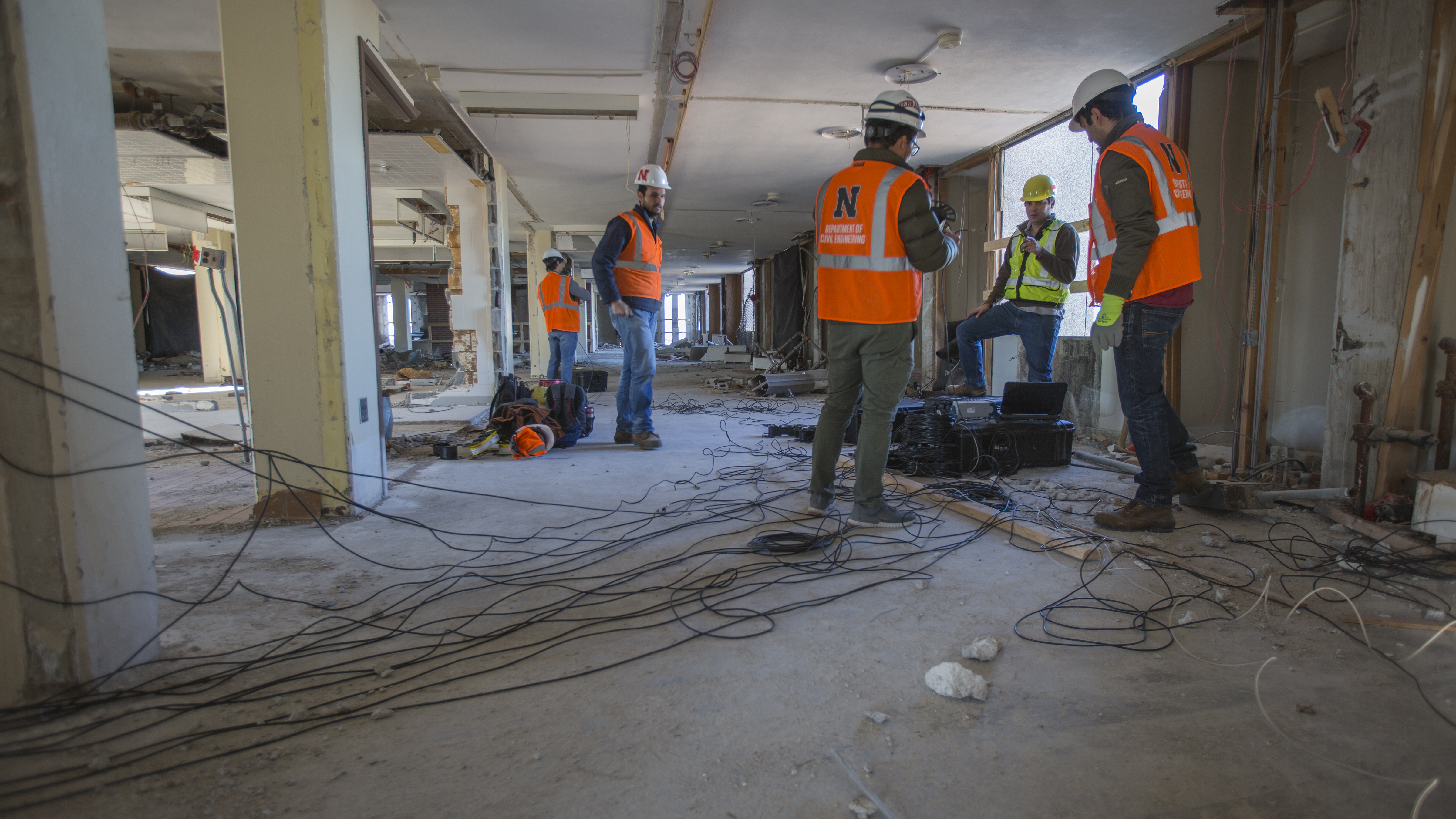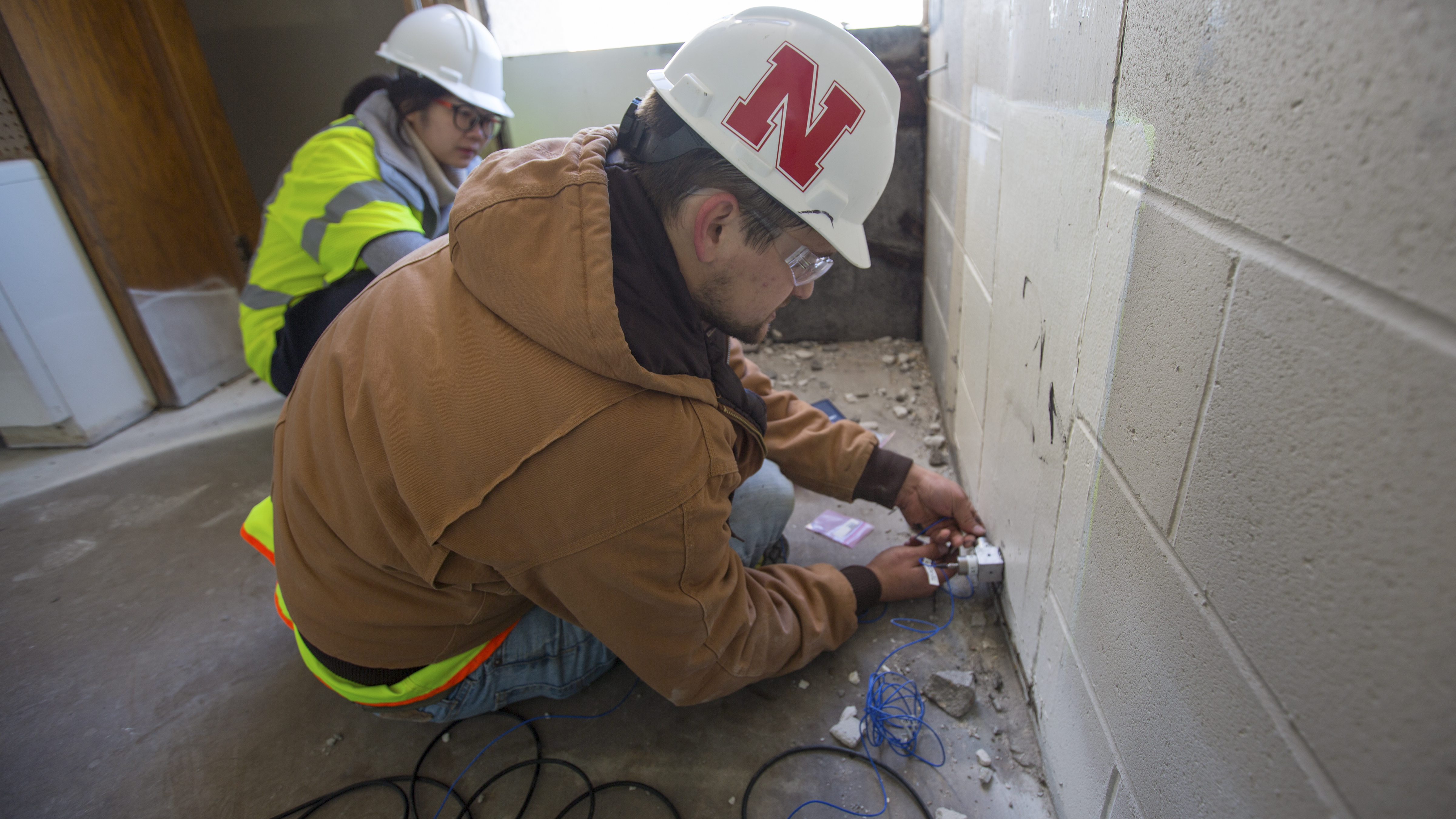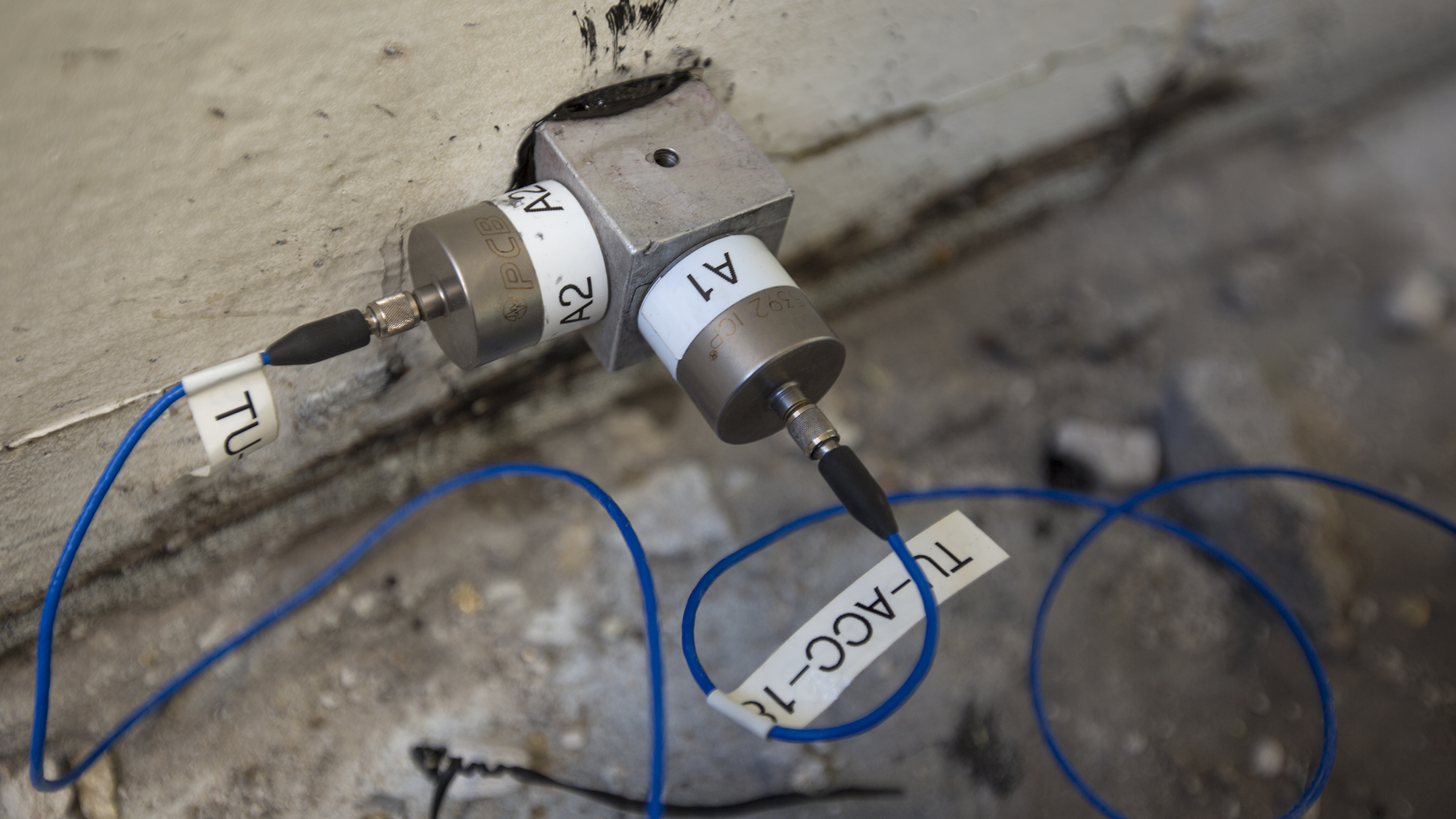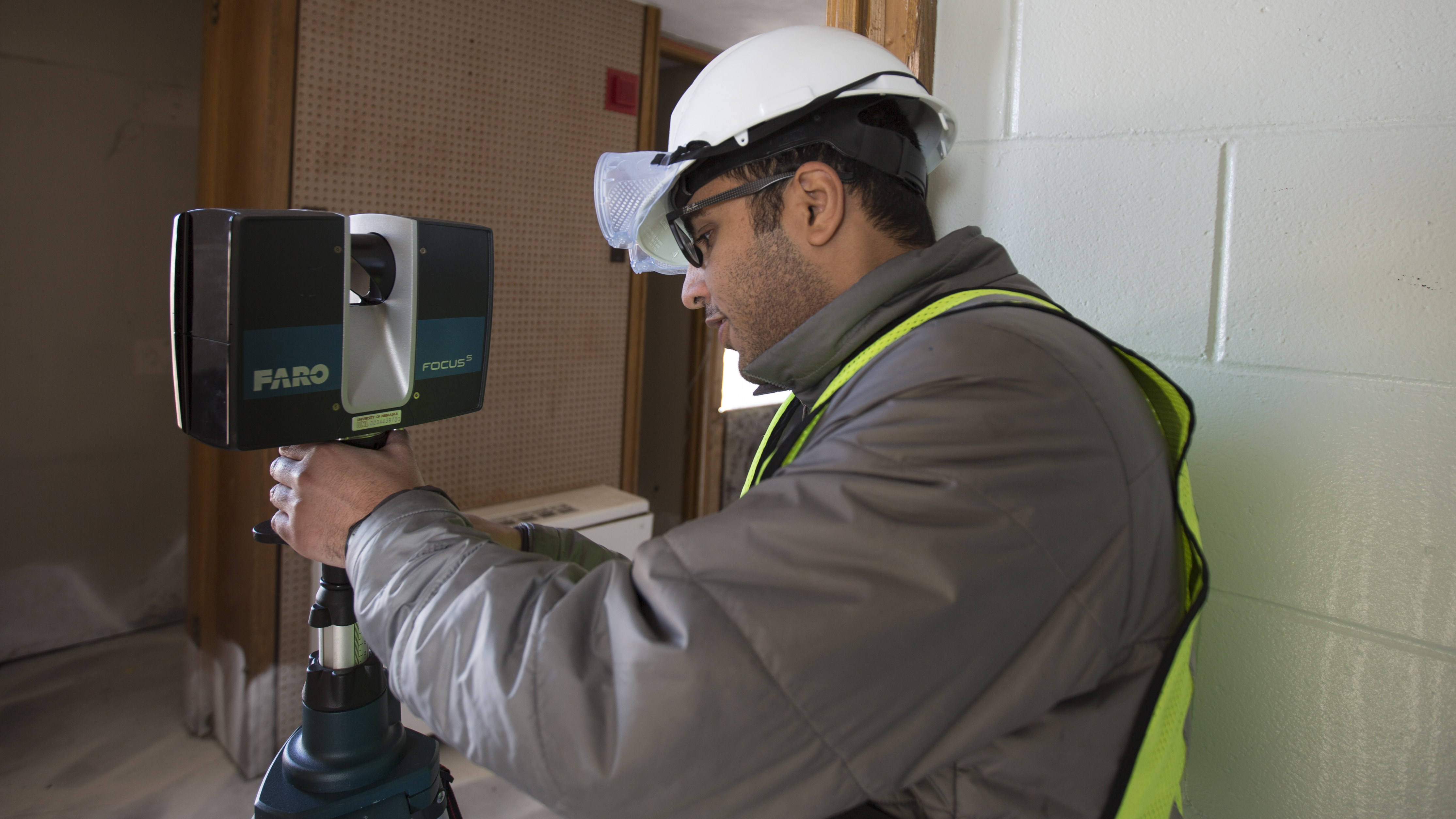
Nebraska’s razing of Cather and Pound halls is helping engineers further define how large, multi-story buildings react to earthquakes, wind and blast loads.
In what is believed to be a landmark study at a public institution, a University of Nebraska–Lincoln engineering team is documenting how the dynamics of the two 13-story towers are changing as demolition crews remove internal structures in preparation for the Dec. 22 implosion. The team also plans to record data as the buildings fall to the ground.
The project, led by Nebraska Engineering’s Richard Wood and Daniel Linzell, has two primary goals — expand the engineering field’s understanding of how large structures react to extreme events, and use data collected to refine engineering models and improve the resiliency of buildings.
“This is extremely unique in terms of a university and demolition company allowing students and faculty access to study a building when crucial pieces of its support system are taken out,” said Linzell, chair and professor of civil engineering. “Through this project, we hope to improve tools that predict the responses of large buildings so that substantial damage caused by extreme events can be prevented or mitigated.”

As demolition prep work has continued through the fall semester, graduate students working in the labs of Wood and Linzell have conducted sensing surveys of the two towers. Each of the sensing studies has used accelerometers affixed to interior columns to measure the frequency of vibrations within the towers.
The data, which is recorded live, is then used to create models that show how the towers move. Combined with a survey of Cather Hall two years ago — when the hall remained open for student housing — the data collected provides a complete picture of how vibrations within the buildings has changed throughout the demolition process.
“We came in two years ago to get a quick sense of the frequency of the buildings because they were slated for demolition,” said Wood, an assistant professor of civil engineering. “From that study, at which time all the walls and structure were still in place, to one we completed two weeks ago, when nearly all the internal walls on multiple floors had been removed, we’ve measured a dramatic shift in the building’s frequencies.”
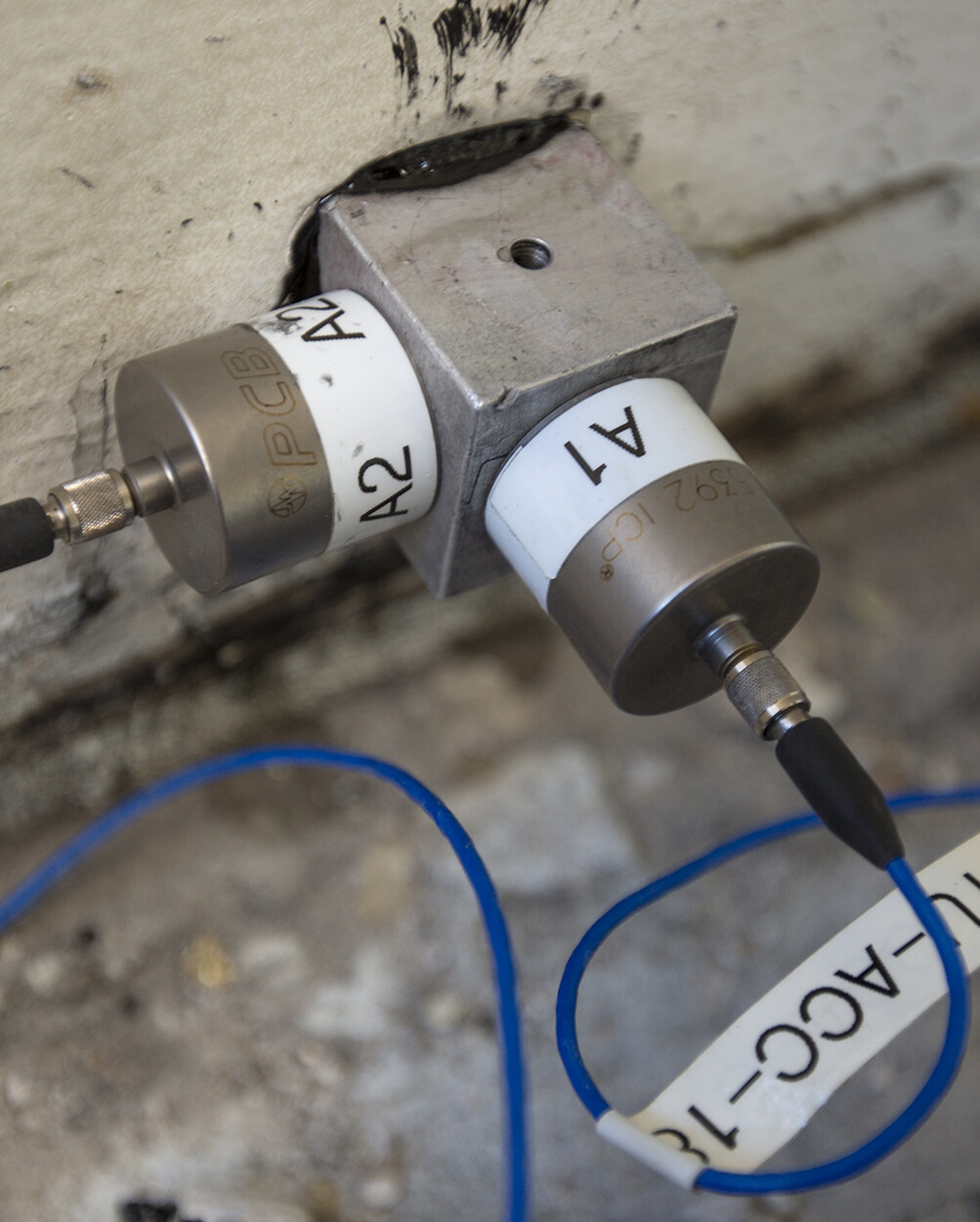
The team will also install 32 accelerometers (27 in the north tower and five in the south) to record how the buildings react when explosives begin the implosion sequence. Wood expects that devices will record less than 60 seconds of data before they are destroyed.
“We expect to record just a small amount of data, but it will be extremely valuable,” Linzell said. “We believe this is the first time a public institution has been allowed to document and report on the forces it takes to bring down a multi-story building on its campus.”
The research team is also using lidar, a system that measures distance using a pulsed laser light, to create accurate 3-D models of floors within the buildings.
The 3-D models mirror other research Wood has done creating detailed scene constructions from natural disaster sites. Some recent projects include the 2015 tornado that struck Pilger, Nebraska, the 2015 Gorkha earthquake in Nepal, and 2017 assessments of Hurricane Harvey damage along the Gulf Coast.
Check it out: 3-D model of a California building damaged by an earthquake and mapped by Richard Wood using lidar.
While furthering engineering knowledge about structures, the work is also providing graduate students hands-on research experience in a soon-to-be demolished building — something that a student might experience if they interned at a major firm.
“Normally, we would only be able to run simulations to learn about a large building like this one,” said Kanchan Devkota, a graduate student in civil engineering. “It has been a rewarding experience to do an experiment like this in a real-life situation.”
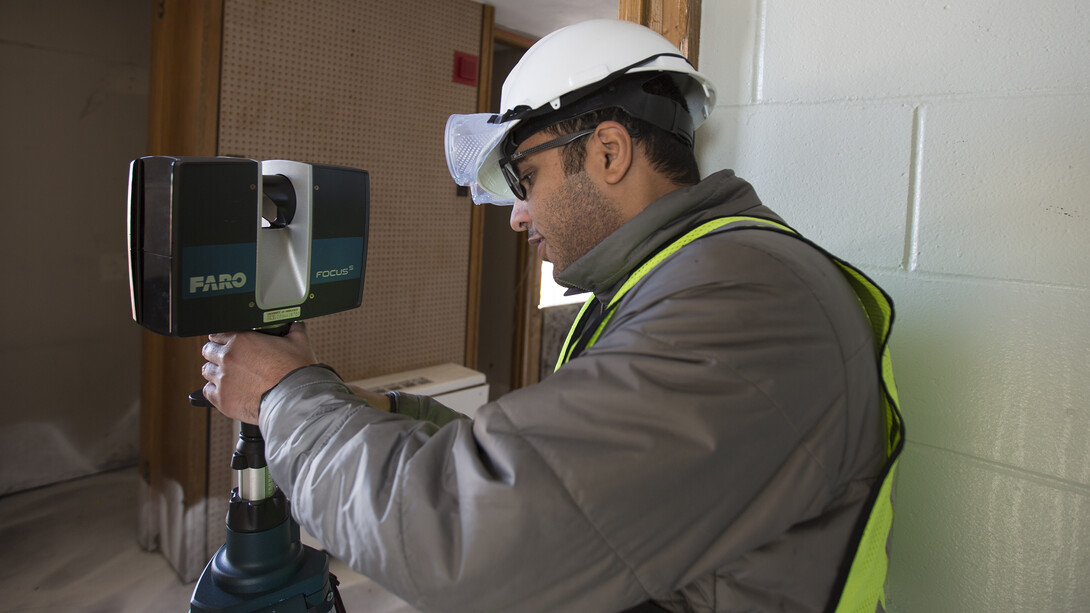
The study of the decommissioned residence halls is an extension of the research expertise of Wood and Linzell.
Research interests for Wood include earthquake engineering, remote sensing, structural damage assessments and extreme loads on structures. Along with creating 3-D models through lidar, Wood also uses unmanned aircraft systems in the field to create detailed reconstructions of structures at natural disaster sites. Examples of Wood’s 3-D research models are available online.
Linzell’s research interests lie in how buildings and bridges respond to various effects, including traffic, impacts and blasts. He also works on developing structural elements and using advanced materials — such as high-performance steel and fiber-reinforced polymer materials — to strengthen bridges and buildings.
Wood plans to use an unmanned aircraft to record the Dec. 22 implosion for the research project. The team is also augmented by Christine Wittich, an assistant professor of civil engineering who will record seismic forces the falling towers generate.
“This research is critical because it enables us to capture this one-of-a-kind data set that can be used to potentially make buildings safer,” Wood said. “It’s also valuable in terms of giving graduate students access to a real-world experience and realistic data sets.”
Linzell said the project is a reflection of the cooperative nature of research efforts at Nebraska.
“To allow faculty and students this kind of access to a structure that is being demolished is incredible,” Linzell said. “The Nebraska ethos of working hard and working together to get things done certainly thrives at this university. In this case, that ethos will allow us to make a direct impact on the engineering field and, possibly, develop methods to make buildings safer.”
